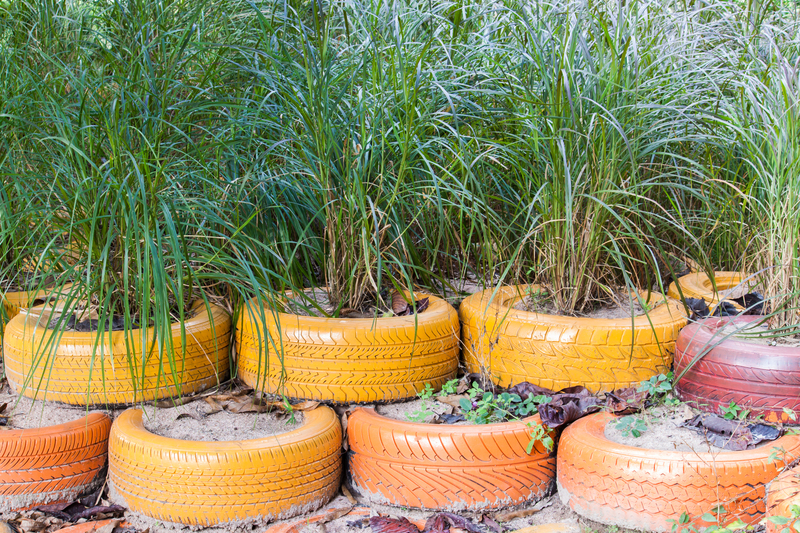Transform Your Home: Expert Hoarder Cleanup Strategies
Is your living space packed to the brim with possessions, making it difficult to move, relax, or invite friends over? Hoarding can be overwhelming, but with the right strategies and expert insights, anyone can reclaim their precious space. This comprehensive guide will walk you through actionable hoarder cleanup strategies designed to restore not just your home, but your peace of mind.
Understanding Hoarding Disorder: Causes and Impact
Before diving into the cleanup process, it is crucial to understand hoarding as a psychological condition, not just a matter of untidiness. Hoarding disorder affects millions and is characterized by an uncontrollable urge to collect items, often with little or no practical value. Common triggers include trauma, anxiety, or a deep emotional attachment to material belongings.
- Emotional Distress: Hoarding can stem from deep-seated emotions such as fear of loss or loneliness.
- Physical Risks: Excessive clutter may lead to safety hazards, fire risks, and structural damage in your home.
- Social Isolation: Cluttered spaces cause embarrassment and make social visits difficult, often increasing isolation.
Transforming your home starts with recognizing these factors and approaching them with empathy and understanding.

When to Seek Professional Help for Hoarding Cleanup
- Pests, mold, or hazardous substances are present
- The homeowner experiences extreme stress or anxiety when items are discarded
- Main entryways, bathrooms, or kitchens are blocked
- Fire exits or safety equipment are inaccessible
Professional hoarder cleaning services bring specialized tools, expertise, and compassionate support, making the process safer and more efficient.
Essential Hoarder Cleanup Strategies to Transform Your Home
Create a Comprehensive Plan
Every effective hoarded home transformation begins with a well-defined plan. Work step-by-step:
- Assess the Situation: Walk through your home and note the areas needing the most attention.
- Set Achievable Goals: Break down each room's cleanup into manageable tasks -- don't aim to do it all in a single day.
- Establish a Timeline: A structured schedule prevents burnout and helps measure progress.
- Gather Supplies: Stock up on heavy-duty bags, storage bins, gloves, masks, and cleaning agents.
Enlist Trusted Support
Cleaning a cluttered home can be emotionally challenging. Enlist family members or close friends who can provide encouragement and practical help. If needed, hire an experienced hoarder cleanup team skilled at handling sensitive situations with care and confidentiality.
Triage and Decision-Making: The Art of Letting Go
A proven expert hoarding cleanup technique is the _triage method_:
- Keep: Essential, meaningful, or functional items go in this pile. Ask, "Have I used this in the last year?"
- Donate: Gently used belongings that serve no current purpose in your life can help others in need.
- Discard: Broken, expired, or irreparable items should be thrown away responsibly.
_If letting go feels overwhelming, try taking photos of sentimental items before removing them._ This honors their meaning while freeing space.
Systematic Cleaning: Room-by-Room Approach
Instead of tackling the entire house, focus on one room at a time. This keeps the process manageable and allows you to see tangible progress, building momentum for bigger challenges.
- Kitchens: Dispose of expired food, broken appliances, and duplicate utensils.
- Bathrooms: Safely throw out old medications and beauty products.
- Living Areas: Sort through newspapers, magazines, and unnecessary knick-knacks.
- Bedrooms: Clear out unworn clothes and forgotten items from under the bed or in closets.
Deep Cleaning and Sanitization
Once the clutter is removed, deep clean each area. Wipe down surfaces, mop floors, wash windows, and sanitize bathrooms and kitchens. Not only does this improve hygiene, but it also brings a sense of accomplishment and a "fresh start" feeling.
Safe Disposal and Responsible Recycling
_Hoarder cleanup solutions_ extend beyond bagging trash. Sort and recycle materials responsibly--e-waste, paper, plastics, and metals often require special handling. Many municipalities offer large-item pickup or recycling events.
- Shredding confidential paperwork protects your personal info.
- Donating usable goods helps your community and reduces landfill impact.
- Engaging hazardous waste disposal services for items like paint and batteries prevents environmental damage.
Restore, Organize, and Redesign
After decluttering and cleaning, focus on organization and maintenance to prevent relapse. Use these tips:
- Invest in shelving, bins, and label makers to maximize storage.
- Establish daily or weekly routines for tidying up -- even ten minutes a day can maintain order.
- Designate "clutter-free zones" in your home for relaxation or socializing.
- Incorporate design elements like plants and natural light to promote calm and wellness.
_Organizing your home_ not only makes it functional but turns it into a sanctuary for you and your loved ones.
Preventing Relapse: Maintaining a Clutter-Free Home
_Reformed hoarding_ takes time and patience. Regular upkeep is essential to avoid slipping back into old habits:
- Practice the "one in, one out" rule: For every new item brought home, remove an old one.
- Schedule seasonal cleanouts: Mark your calendar for quarterly or biannual decluttering sessions.
- Seek ongoing support: Support groups or therapy can help address underlying causes of hoarding.
If you notice clutter beginning to recur, don't wait: address it early to stay ahead of the mess.
The Role of Compassion and Mental Health in Hoarder Cleanup
It's vital to recognize that hoarding disorder is fundamentally a mental health challenge. If you or a loved one struggles to part with possessions, consider consulting with a therapist who specializes in hoarding recovery. Gentle encouragement, patience, and positive reinforcement are far more effective than criticism.
_Professional organizers_ and cleanup specialists often team up with social workers or healthcare providers for holistic solutions.
Expert Tips for a Lasting Transformation
- Visualize your end goal -- a picture of a peaceful, open space inspires dedication.
- Document your progress -- before and after photos highlight your achievements.
- Reward yourself for milestones -- small treats or breaks keep motivation high.
- Be kind to yourself -- setbacks are normal; persistence is key.

Frequently Asked Questions about Hoarder Cleanup
How long does a hoarder cleanup take?
Every project is unique. A moderate cleanup may take a weekend, while severe hoarding situations could require weeks or months--especially if professional help, repairs, or pest control are needed.
Are there risks in cleaning a hoarded home yourself?
Yes. Exposure to mold, dust, sharp objects, pests, or biohazards can pose health threats. For extreme cases, always hire professional hoarder cleaning services.
Can hoarder cleanup restore property value?
Absolutely. A thorough decluttering and cleaning can significantly increase your home's value and appeal -- key for selling or renting.
Conclusion: Begin Your Hoarded Home Transformation Now
Taking the first step towards a clutter-free home is an act of courage and self-care. With expert hoarder cleanup strategies--planning, support, decluttering, deep-cleaning, organization, and mental health awareness--you can transform your living space into a sanctuary of peace and functionality.
Don't tackle hoarding cleanup alone. Whether you're guiding a loved one or managing your own home, there are resources and professionals ready to help. By taking action today, you're not just cleaning a house--you're reclaiming your life.